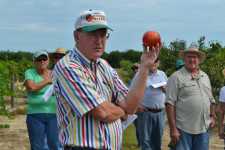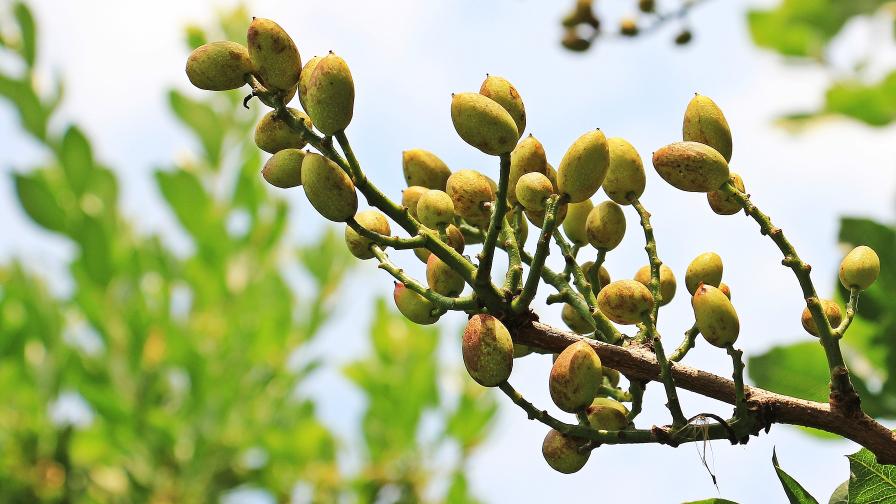Florida Growers Gather For Pomegranate Pointers

The hunger for viable alternative crops in Florida continues to grow. And based on the attendance during the UF/IFAS Mid Florida Citrus Foundation’s pomegranate field day held at Water Conserv II in Winter Garden, the funny shaped fruit with ancient roots is at the top of the menu for many growers.
Going off of the latest observations gathered at the grounds of the Central Florida facility, Dr. Bill Castle, professor emeritus, UF/IFAS, said there is reason for hope. He pointed out two younger plant varieties in particular (Vietnam and Shari’s) that were standout performers in terms of growth, flowering, and fruiting over the past year. “Vietnam has grown very well and is among the largest plants,” Castle noted. “It went through the winter fine and produced fruit in the spring.”
Noticeably there wasn’t much fruit on the trees lining the grove, especially compared to last year’s field day. Castle said he suspects the mild winter had something to do with that. He admits that previously he did not believe pomegranates required a certain amount of chill hours to effectively produce. After comparing data over the past two years, his thinking has been swayed. “The outcomes over the past two years do suggest the while pomegranates are cold tolerant, they also require some timely winter cold temperatures to flower,” he said. “Now I’m convinced they need it.”
While there is still much to learn about pomegranate production in Florida, the challenges are apparent. While pomegranates do well in more arid climates, the Sunshine State’s hot and humid environment certainly make staving off pests and diseases more of an issue. So far, fungal pathogens such as Botrytis, Fusarium, and Botryosphaeria in particular, have been identified as problems. Trials with various fungicides, however, have shown effectiveness in control. Though, growers might find constraints in that some crop protection materials are not labeled for pomegranates at this time.
Researchers are getting help from grower cooperators. Castle said he’s pleased with how well the cooperative project is working as he held up an impressive looking “Florida grown” pomegranate. “This pomegranate represents potential,” he said.
The search continues for new selections. According to Castle, their accessions now total nearly 100. Among what cooperators have been growing, several new varieties have been tapped for a closer look including Suhr-Anor, Vkusnyi, Sirenevyi, Gissarski Rozovyi, Afganski, Al-Sirinar, Apseronski Krasnyi, and Girkanets. 11 different selections, including most of those listed above, were part of a variety taste-test lineup and evaluation that took place following the field tour program.
Further research is planned for pomegranates at Water Conserv II. According to Castle, cuttings of four of the older plant varieties (Azadi, Desertnyi, Medovyi Vahsha, and Salavatski) have been rooted and are slated for planting in a new 1-acre plot next year and seedlings being grown for a second acre.
Mickey Page, grove manager, Mid Florida Citrus Foundation, said he was glad to see how much the field day has grown. “It’s a testament to the growing interest in pomegranates [in Florida].”
To help feed the need for more information and accommodate the influx of interest, the Florida Pomegranate Growers Association was formed this past March. The inaugural Florida Pomegranate Growers Association Meeting & Conference is scheduled for Sept. 14.









